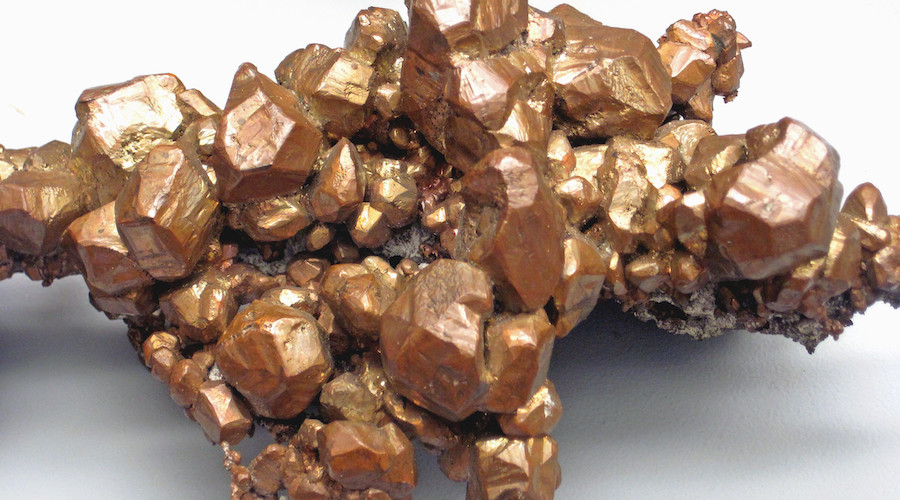
Can your grasp just how hard it is to do something novel with copper? Yet it remains a wonderful metal and the promise is always a fast path to commercial success. After all copper has a six thousand year head start on the science.
How this relates to fuel escapes me, but a new way to induce novel reactions is always welcome.
All good.
Copper may be the key to turn CO2 into fuel
April 4, 2021 | 8:00 am
Copper crystals. (Reference image by James St. John, Flickr).
https://www.mining.com/copper-may-be-the-key-to-turn-co2-into-fuel/
Researchers at Ruhr-Universität Bochum and the University of Duisburg-Essen have developed a new catalyst for the conversion of carbon dioxide (CO2) into chemicals or fuels.

In a paper published in the journal Angewandte Chemie, the scientists explain that what they did was optimize already available copper catalysts to improve their selectivity and long-term stability.
According to the researchers, even though copper has already emerged as a promising catalyst, it must be in the form of a partially positively charged ion. The problem is that under conventional reaction conditions, copper is rapidly converted from its positively charged form to the neutral state, which is unfavorable for the formation of products with more than two carbon atoms and thus deactivates the catalyst.
THE TEAM TESTED DIFFERENT COPPER-BORON RATIOS AND DETERMINED THE OPTIMAL COMPOSITION TO FAVOR THE FORMATION OF COMPOUNDS WITH MORE THAN TWO CARBON ATOMS
To address this issue, the team led by Yanfang Song modified a copper catalyst with boron. In detail, they tested different copper-boron ratios and determined the optimal composition to favor the formation of compounds with more than two carbon atoms. They also showed that the boron-copper catalyst can be operated at densities that would be required on an industrial scale.
Their experiment involved implementing a system in the form of a gas diffusion electrode in which a solid catalyst catalyzes the electrochemical reaction between the liquid and gaseous phases. In the boundary of these phases, CO2 should dissolve and the group was able to achieve this using a special binder.
In addition to this and to prevent corrosion of the electrodes and keep the system stable over a long period, the chemists integrated a so-called ‘sacrificial anode’ made of zinc into the system. Since zinc is a less noble metal than copper, it gets corroded first, while the copper is spared.
“The combination of a selective and active catalyst material in a gas diffusion electrode and the addition of the stabilizing zinc is an important step towards the use of CO2 for the synthesis of base chemicals,” Wolfgang Schuhmann, co-author of the study, said in a media statement.
No comments:
Post a Comment